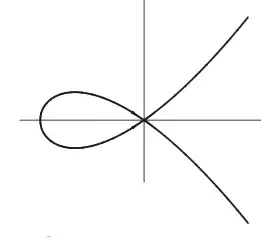I'm trying to understand inverse limits. For this I am looking at the example (mentioned in Atiyah-Macdonald, page 102): We start with the topological abelian group $G = \mathbb Z$ (endowed with the topology induced by $|\cdot|_p$) and observes that we have an inverse system, that is, a sequence of groups $G_n$ and group homomorphisms $f_{ji}: G_i \to G_j$ ($j \leq i$) such that
(i) $f_{ii} = id$
(ii) $f_{kj} \circ f_{ji} = f_{ki}$
given by $G_n = \mathbb Z / p^n \mathbb Z$ and homomorphisms $f_{ji}: \mathbb Z / p^i \mathbb Z \hookrightarrow \mathbb Z / p^j \mathbb Z, \bar{x} \mapsto x \mod p^j$. Then, by definition, the inverse limit is $$\lim_{\longleftarrow_{n \in \mathbb N}} G_n = \{(x_n) \in \prod_{n \in \mathbb N} G_n \mid f_{ji} (x_i) = x_j , \text{ for all } j \leq i \}$$
Now since $f_{ji}$ are the "projections" (they are $\mod p^j$ really) we see that the requirement $f_{ji} (x_i) = x_j$ is nicely fulfilled if $x_{i+1}$ only adds stuff times $p^{i+1}$ since then the added stuff gets deleted when projecting down.
Hence we "see" (we don't really but we already know what it should be) that sequences in this inverse limit look like $p$-adic numbers, since $x_i = \sum_{k=0}^i a_k p^k$.
Question 1: Do I have it right?
Question 2: Why do we need a topology on the group? I don't see where we used the topology.
And question 3: Would someone give me another (very easy!) example of an inverse limit, please?
